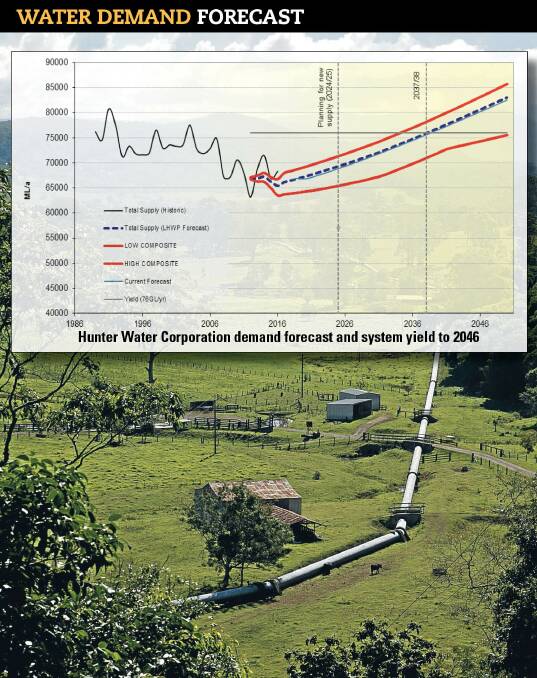
By 2038 the Hunter’s water consumption will return to the same levels as it was in the early 2000s, new government modelling shows.
Subscribe now for unlimited access.
$0/
(min cost $0)
or signup to continue reading
The prediction, shown in the Greater Hunter Regional Water Strategy is based on population growth and water use demand within the region.
If current trends remain unchanged, planning for a new permanent water supply would commence in about 2025.
However, Hunter Water is hopeful that improved connectivity between the Upper and Lower Hunter and Central Coast combined with increased water efficiency and enhanced technologies may push the date back further.
READ MORE:
“Rather than simply building large scale, expensive infrastructure now, Hunter Water aims to defer the time between now and when we would need to make decisions on our long-term water future,” a Hunter Water spokeswoman said.
“By working with our community to reduce water usage and reducing losses from our system, we will have an opportunity to consider new technologies and other innovative solutions that could help us save water, and possibly delay the need for a new water source indefinitely.”
Land once earmarked for the construction of Tillegra Dam, which was scrapped in 2011, is no longer available. However, some argue that nearby Native Dog Creek could be a suitable spot for future water storage.
A 2014 Standing Committee on state development also identified spare capacity at Lostock Dam on the Paterson River.
The state government announced on Thursday that it would would invest $4.3 million to investigate the viability of a two-way pipeline between Lostock Dam and Glennies Creek Dam and a potable water pipeline from Hunter Water’s network to Singleton as part of a new strategy to enhance water security in the region.
Minister for Regional Water Niall Blair said the pipelines could be used to transfer water between critical locations in times of drought.
“This strategy is about planning for the future, planning for the next 20-30 years so we can secure the Hunter’s economic future,” he said.


